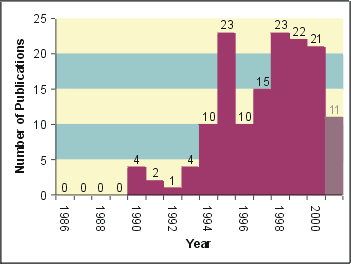The optical tweezers field has developed rapidly, especially in the late '80s
and '90s. The following information gives a flavour of this hectic pace!
| Year |
Event |
| 1970 |
Ashkin
demonstrates the effect of radiation pressure on latex spheres in water
(scattering and gradient forces) and produces the first dual
beam trap. |
| 1971 |
First single-beam trap used to levitate a particle
in air (“optical fountain”) (Ashkin
and Dziedzic) |
| 1986 |
Ashkin
et al. develop single beam gradient
force optical trap (“optical tweezers”) |
| 1987 |
First application to biological samples (Ashkin
and Dziedzic); first use of Nd:YAG laser to avoid optical damage to
organisms (Ashkin et al.).
|
| 1990 |
First application of tweezers
to a motor protein: kinesin (Block et
al.) |
| 1992 |
First multiple trap apparatus (splitting laser
by polarisation) (Misawa et al.)
|
|
1993 |
Escape force method used to
measure kinesin stall force (Kuo and Sheetz) |
| First nanometre resolution position
sensor (interferometric method) developed; used to observe kinesin steps
(Svoboda et al.) |
| Multiple traps generated by rapidly
moving the beam (Visscher et al.) |
| 1994 |
First application of optical tweezers to myosin;
first use of bright field quadrant photodiode position sensor; first use
of feedback. (Finer et al.) |
|
1995 |
Molloy
et al. first to measure work done by a single myosin head. “Molloy
effect” – new way of interpreting optical trapping records (non-processive
motors). |
| First application of tweezers
to a DNA motor – RNA polymerase (Yin et
al.) |
| 1998 |
Ishijima et
al. combine optical tweezers with TIRF to study mechanochemical
coupling in myosin. |
| Development of “force clamp” feedback system (Visscher
and Block) |
| 1999 |
First application of optical
tweezers to “unconventional” myosins (Veigel
et al.; Mehta et al.)
|
| Timeline: Optical
Tweezers and their application to Molecular Motors. A selective list
of some of the highlights in the development of the field. For a personal
account of the history of trapping, see Ashkin's
review (1997). |
